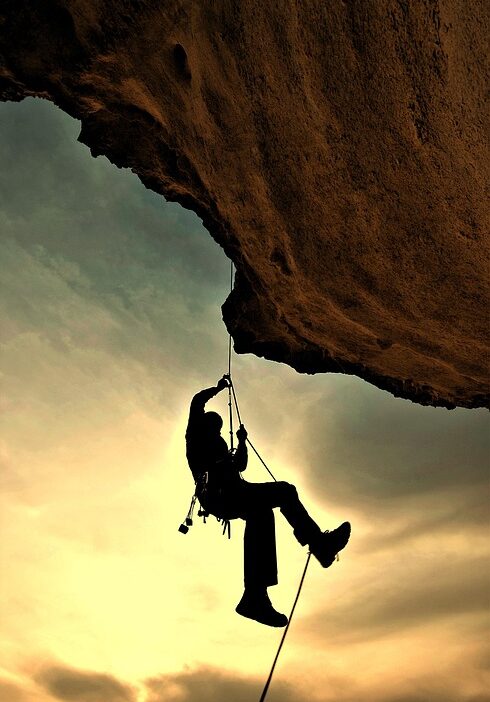Climbing, whether it’s bouldering, sport, trad, or alpine, offers a thrilling escape into nature and a test of physical and mental strength. However, to ensure a safe and enjoyable experience, having the right gear is essential. Here’s a comprehensive guide to must-have equipment for every climber, regardless of experience level.
1. Climbing Shoes
Importance: Climbing shoes are arguably the most critical piece of equipment for any climber. They provide the necessary grip and support to help you tackle various climbing surfaces.
Features to Look For:
- Fit: Shoes should fit snugly without causing pain. A snug fit enhances control and precision.
- Material: Leather stretches over time, while synthetic materials retain their shape better.
- Closure Type: Velcro closures offer convenience for sport climbing, while laces provide a customizable fit for trad climbers.
2. Harness
Importance: A good harness keeps you secure during climbs and is essential for safety.
Features to Look For:
- Comfort: Opt for adjustable leg loops and a padded waist belt for comfort during long climbs.
- Gear Loops: Adequate gear loops allow easy access to essential equipment while climbing.
- Safety Ratings: Ensure the harness meets safety standards and has been tested.
3. Climbing Rope
Importance: Climbing ropes are vital for safety, acting as a lifeline during climbs.
Types:
- Dynamic Ropes: Designed to stretch under load, absorbing the impact during a fall. Best for sport and trad climbing.
- Static Ropes: Used for glacier travel, hauling gear, and rescue operations. Not suitable for climbing falls.
Features to Look For:
- Diameter and Length: Thinner ropes are lighter but may be less durable. Choose length based on the routes you’ll be climbing.
4. Carabiners
Importance: Carabiners are versatile tools used for connecting gear, protecting against falls, and creating anchors.
Types:
- Locking Carabiners: Essential for safety; they prevent accidental openings.
- Non-Locking Carabiners: Useful for non-critical connections, but should never be used for lead climbing.
Features to Look For:
- Material: Choose lightweight aluminum for most climbing needs, while steel carabiners are best for heavy-duty jobs.
5. Belay Device
Importance: A belay device allows you to control the rope’s tension as your climbing partner ascends, ensuring their safety.
Types:
- Tubular Devices: Simple and effective, suitable for various scenarios.
- Assisted Braking Devices: Provide extra security and make it easier to catch falls, perfect for beginners.
6. Chalk and Chalk Bag
Importance: Climbing chalk helps keep your hands dry and improves grip, which is crucial for performance.
Features to Look For:
- Type of Chalk: Loose chalk is versatile, while chalk balls minimize mess.
- Chalk Bag: Choose a bag with an easy-access opening and a secure closure to avoid spills.
7. Helmet
Importance: Helmets protect against falling rocks and head injuries from falls, making them a non-negotiable piece of equipment, especially in outdoor climbing.
Features to Look For:
- Fit and Comfort: A snug and comfortable fit is crucial for long climbs.
- Ventilation: Ensure the helmet has adequate ventilation to keep you cool during strenuous climbs.
8. Climbing Pack
Importance: A climbing pack is necessary for carrying your gear, food, and water on multi-pitch routes or mountain ascents.
Features to Look For:
- Size and Weight: Choose a pack that is lightweight but has enough capacity for all your gear.
- Attachment Points: Loops or straps for securing gear like ropes and sleeping pads are beneficial.
9. First Aid Kit
Importance: Accidents can happen, even for the most experienced climbers. A well-stocked first aid kit is essential for treating minor injuries promptly.
Essential Items:
- Adhesive bandages
- Sterile gauze and tape
- Pain relievers
- Antiseptic wipes
10. Weather-Appropriate Clothing
Importance: Dressing appropriately for climbing conditions can enhance performance and ensure comfort.
Clothing Recommendations:
- Base Layer: Moisture-wicking fabrics are vital for managing sweat.
- Mid Layer and Insulation: Fleece or down jackets provide warmth during climbs.
- Shell Layer: Waterproof and windproof jackets protect against adverse weather.
Conclusion
Investing in the right climbing gear not only enhances your climbing experience but also significantly improves safety. As you accumulate gear, each piece becomes a vital part of your climbing toolkit, allowing you to focus on what truly matters: the thrill of the climb. Remember, always prioritize safety and comfort, and ensure that your equipment is well-maintained and appropriate for the type of climbing you plan to undertake. Happy climbing!



